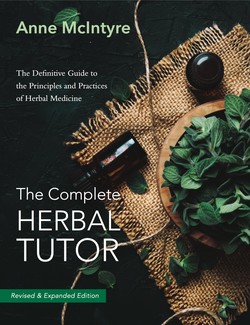Читать книгу The Complete Herbal Tutor - Anne Mcintyre - Страница 17
ОглавлениеThe Healing Tradition in North America
Native North American herbalism was a shamanic tradition – ritualistic dances, playing drums and rattles and taking mind-altering plants such as peyote and datura were intended to enable the shaman or medicine man or woman to enter a trance-like visionary state to enable him or her to communicate with the spirit world, including the Great Spirit (Wakan Tanka, in the language of the Lakota Sioux, like a notion of God that permeates everything), and the soul of the ill person in order to bring about healing. Help was sought in this way for healing physical ills and troubles of the psyche, and to engender harmony within communities or between individuals.
Plants were revered not only for their ability to cure diseases of the body but also imbalances in the mind, emotions and spirit. They were an inextricable part of the Native American religion and mythology, used in ceremonies and rituals. Disease was seen to be caused by human, supernatural or natural causes and the medicine man or woman was called upon to administer herbs for anything from wounds and broken bones to unfulfilled dreams, spiritual intrusion and soul loss.
Everything was performed traditionally in a circle, and according to Black Elk of the Teton Dakato, the “Power of the World” always worked in circles. “All our power came to us from the sacred loop of the nation”, he said, and his people flourished as long as the circle was unbroken. “The flowering circle of the four quarters nourished it. The east gave peace and light, the south gave warmth, the west gave rain and the north with its cold and mighty wind gave strength and endurance.”
A group of herbalists in 19th century North America, known as Physiomedicalists, blended together the traditions of European herbalism brought to America by the Pilgrim fathers, with the herbal wisdom of the North American Indians. These herbs included pleurisy root (Asclepias tuberosa), barberry (Berberis vulgaris), black cohosh (Actaea racemosus), gravel root (Eupatorium purpureum), boneset (Eupatorium perfoliatum), golden seal (Hydrastis Canadensis), witch hazel (Hamamelis virginaurea), poke root (Phytolacca decandra), cramp bark (Viburnum opulus) and black haw (Viburnum prunifolium). The renowned founder of Physiomedicalism was Dr Samuel Thomson (1769-1843) who was the first to bring the Native American remedy Lobelia to the attention of the medical world. He kept alive traditional ideas of allowing the body to heal itself and helping to create the ideal conditions for this with the use of herbs, and mixed it with knowledge he had gained by observation of the Native American medicine men, such as the value of sweating for clearing toxins from the body.
HERBS COMMONLY USED IN NATIVE AMERICAN MEDICINE
Asclepias tuberosa (see page 125)
Baptisia tinctoria (see page 128)
Berberis (see page 133)
Berberis Vulgaris (see page 129)
Cynara Scolymus (see page 154)
Dioscorea villosa (see page 156)
Echinacea augustifolia (see page 157)
Eupatorium perfoliatum (see page 164)
Eupatorium purpureum (see page 165)
Hamamelis virginiana (see page 181)
Hydrastis canadensis (see page 185)
Myrica cerifera (see page 203)
Phytolacca decandra (see page 215)
Smilax ornata (See page 239)
Trillium erectum (See page 253)
Ultmus fulva (see page 255)
Viburnum opulus (see page 263)
Viburnum prunifolium (see page 264)
Zanthoxyllum americanum (see page 271)
Echinacea Augustifolia, or echinacea.
Berberis, or oregon grape.
Like ancient and modern herbalists, Thomson recognised the presence of the vital force that flows throughout nature and animates all in existence. Described as the spirits by the ancient Greeks and American cultures, the qi of China's medicine and philosophy, and prana of Ayurveda, the vital force is our innate healing energy that manifests itself daily in the amazing feats of the body including coughing to clear the airways of phlegm, sneezing to shift irritants from the nose, vomiting to clear the stomach of infection, and diarrhoea to remove toxins from the bowel. This self-healing mechanism is called homoestasis by modern science.
Thomson also held that all bodies were composed of the four elements, earth, air, fire and water, and health derived from their harmonious interplay. Herbs were used primarily to maintain or correct this balance, and prescriptions were designed to do one of four things: astringe (tone) or relax, stimulate or sedate. Toning herbs included shepherd's purse, agrimony and beth root; relaxing herbs included crampbark and lemon balm. Ginger and cayenne were seen as stimulating while chamomile and yellow jasmine were sedating. Thomson's model of physiomedicalism was followed in America by other botanic schools, notably the Ecletics founded by Dr Wooster Beech in the 1830s, who also used native Indian traditions mixed with European knowledge and orthodox medical practices. Physiomedicalism was brought to England in 1838 by Dr Albert Coffin, and Wooster Beech arrived in the 1850s to bring Eclectic medicine to Europe. Although Thomson's ideas met with enormous opposition from allopathic doctors in America, as the same ideas have survived in Europe until more recently. They are the same ideas that formed the basis of Hippocrates' humoral medicine, and the vast systems of Chinese, Indian and Tibetan medicine.
Asclepias tuberosa, or pleurisy root (above) and Viburnum opulus, or cramp bark (above right) are commonly used in Native American medicine. Pleurisy root relieves pain and inflammation, while cramp bark is a known relaxant.
